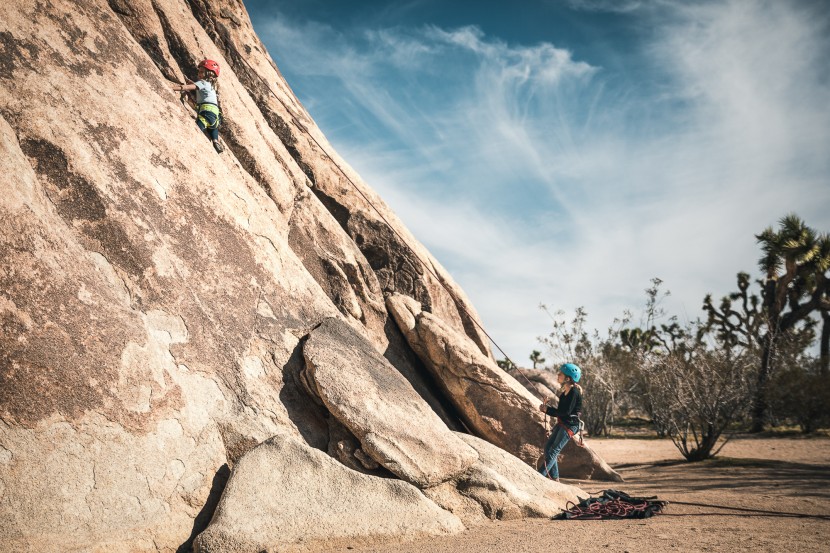For the first time, here at OutdoorGearLab, we have conducted a conclusive side by side test of kids' climbing harnesses. We took two kid crushers, ages seven and nine, and eleven children's harnesses of all types on an epic family road trip which started out in North Carolina and continues in Southern California passing through and climbing in Oklahoma, Utah, and Arizona.
We tested both basic full-body harnesses and full-featured sit harnesses in all types of scenarios from hang-dogging, belaying, and rappelling to making fairy houses at the base of the wall while mom and dad put the ropes up.
Hanging Comfort
We put the harnesses to the test side by side, pitch after pitch. We spent a considerable amount of time hanging on routes and rappelling/lowering assessing which harnesses we felt the most comfortable in, and which ones had uncomfortable pressure points. If a new climber is uncomfortable in their harness they will have little interest in climbing.
Standing Comfort and Mobility
While our testers weren't climbing or rappelling, they were sitting or playing around the base of the wall or under boulders. They also spent time around the house wearing them and assessing how they felt. Unnecessary bulk, restrictive movements, shoulder straps that wouldn't stay up and buckle pressure points were some of the things we were assessing while wearing the harnesses while not on route.
Features
We took note of all the features each harness had and evaluated how effective they were. For example, good gear loops should be large and easy to clip and unclip gear from. Automatic locking buckles should be easy to adjust, and a good pair of elastic leg loop risers should be easy to adjust. Safety, of course, is another factor that should be at the top of anyone's list of important features. While all the harnesses tested are of course safe if used in the manner in which they were designed, we paid close attention to the features of the harnesses that add an extra degree of safety. For example, some harnesses offer wear-indicators to show if the tie in points or belay loops are showing excessive wear, while other harnesses, made for the youngest fidgety climbers, have the buckles in the back so they won't be messed with by idle hands.
Versatility
Some harnesses had great versatility allowing young climbers to progress through the sport, i.e. belay loops, gear loops, etc., while others were versatile in the sense that they fit a wide range of sizes so they grow with the child and allow the harness to be shared with friends or siblings.

